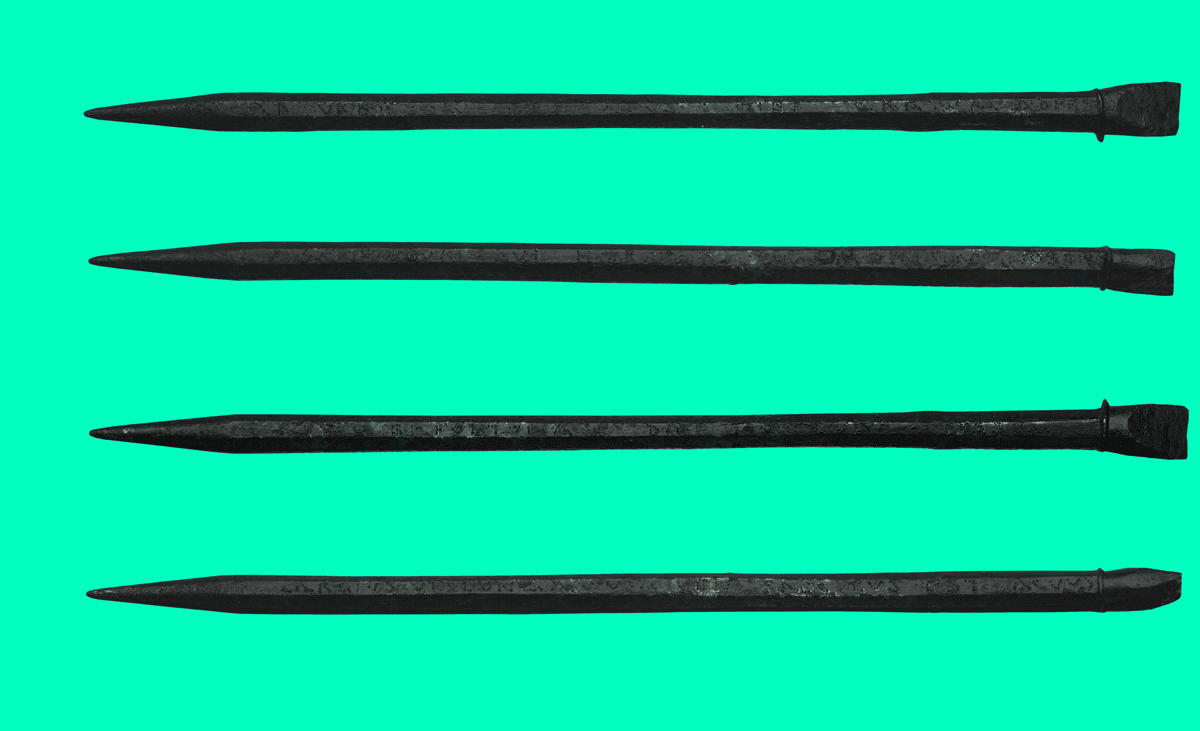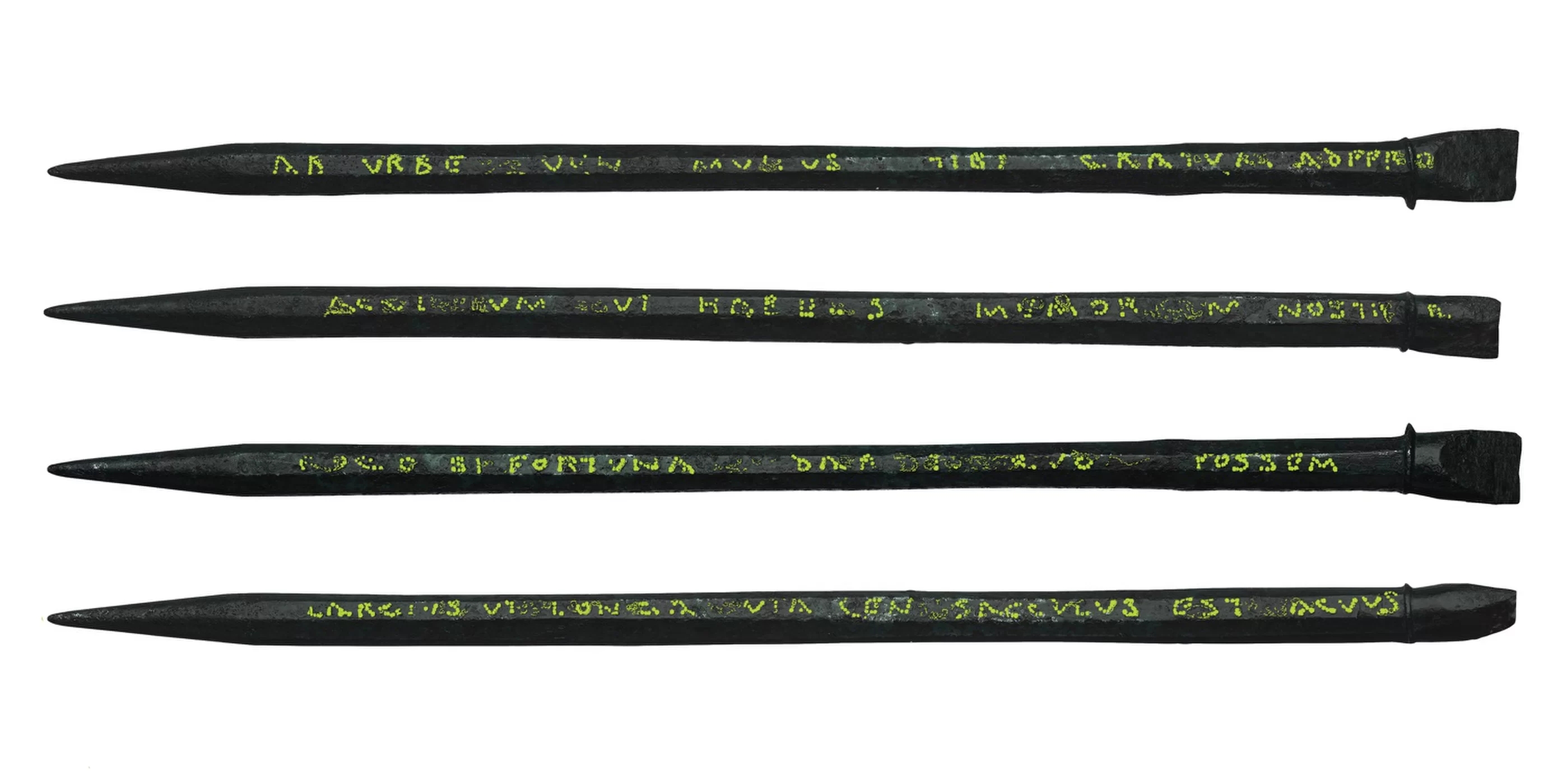DepthReading
Ancient Roman 'Pen' Was a Joke Souvenir
The tradition of buying cheap, joke souvenirs for your loved ones while traveling dates back at least two millennia.
During an archaeological excavation at a Roman-era site in London, researchers found around 200 iron styluses used for writing on wax-filled wooden tablets. One of those styluses, which just debuted in its first public exhibition, holds a message written in tiny lettering along its sides. The inscription's sentiment, according to the researchers who translated it, is essentially, "I went to Rome and all I got you was this pen."
Roger Tomlin, a classicist and epigrapher at the University of Oxford, translated the full inscription as follows:
"I have come from the City. I bring you a welcome gift
with a sharp point that you may remember me.
I ask, if fortune allowed, that I might be able (to give)
as generously as the way is long (and) as my purse is empty."
The researchers said the "the City" in the inscription likely refers to Rome. The stylus, which dates to around the year 70, was discovered during construction for Bloomberg's European headquarters in London. The headquarters was built over the former course of a now-lost tributary of the River Thames, called the River Walbrook. At the site, archaeologists have found the remains of part of Londinium, the Roman settlement that was established near the edge of the empirearound the year 43.
Credit: The tongue-in-cheek sentiment on the ancient stylus is reminiscent of the kinds of novelty souvenirs we still give today.
The Museum of London Archaeology (MOLA) conducted excavations at the so-called Bloomberg site from 2010 to 2014, and an analysis of the 14,000 artifacts recovered is ongoing. (A full publication of the finds, including a description of the inscribed stylus, is expected next year.)
According to MOLA, researchers have found only a handful of inscribed styluses throughout the former Roman Empire, and none of those messages are as long or poetic as this one. The researchers said that there may be more styluses with inscriptions that have yet to be discovered; this hard-to-read inscription was barely legible even after conservation.
"This unique inscribed stylus provides a new window on Londinium's international connections and its literary culture, but it also provides us with very tangible human connection to the owner and to the person who gave them this affectionate, if inexpensive, gift," Michael Marshall, a senior Roman finds specialist for MOLA, said in a statement.
In addition to writing implements, archaeologists working on the London excavation found more than 400 fragments of personal letters, loan notes, contracts, receipts and other texts scrawled on wax tablets. These fragile documents rarely survive in the archaeological record, but the waterlogged site helped preserve the wax surfaces and their inscriptions. While many tablets had been reused, financial and legal documents make up a higher proportion of the texts that have survived, probably because people would have been more likely to save these documents, a book about the finds said.
The texts discovered at the Bloomberg site include one document dated January 8 of 57, in which one man acknowledges that he owes another man 105 denarii for merchandise that was sold and delivered. This may be both Britain's earliest piece of handwriting and London's earliest financial document. Another text, created sometime between 65 and 80, contains the earliest known reference by name to London in a tablet.
The souvenir stylus is now on display at the Ashmolean Museum in Oxford as part of the new exhibition "Last Supper in Pompeii." This exhibit brings together hundreds of objects meant to reflect aspects of daily life (especially the food and wine) during the last days of Pompeii, before the eruption of Mount Vesuvius in 79 destroyed the city in spectacular fashion.
One more object from the Bloomberg site has also been included in this exhibition: a wooden wine barrel lid labeled "AMIN," suggesting the barrel once contained Amineum wine, which was the finest grape variety according to Pliny the Elder, who wrote an important encyclopedia of the Roman world and died in the Pompeii eruption.
Another 600 of the recently excavated finds from the Londinium site are currently on display at the London Mithraeum Bloomberg Space.
Category: English
DepthReading
Key words:


